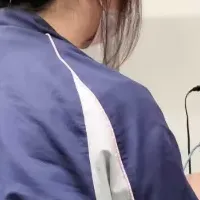
SEOULTECH Researchers Innovate Graphene-Based Laser Technology for Flawless Flexible Displays
Groundbreaking Development in Flexible Displays
Recent advancements in display technology have taken a significant leap forward thanks to innovative research conducted at the Seoul National University of Science and Technology (SEOULTECH). Researchers have recently unveiled a graphene-based laser lift-off technique, specifically designed to separate ultrathin OLED displays without causing damage. This technique not only preserves the integrity of the displays but also enhances their properties, making them ideal for integration into wearable technology.
The Problem with Traditional Methods
As the demand for lightweight and flexible electronic devices continues to grow, existing manufacturing processes have struggled to keep pace. Traditional laser lift-off (LLO) techniques often fall short when dealing with ultrathin polyimide (PI) films that have thicknesses below 5 μm. In these cases, the process frequently leads to mechanical deformations, wrinkling, and the presence of unwanted residues, which compromise the quality and functionality of the devices produced.
To address these challenges, the research team, led by Professor Sumin Kang, turned to graphene—an extraordinary material known for its outstanding thermal and mechanical properties. The result was the development of a new method called graphene-enabled enhanced laser lift-off (GLLO).
Introducing the GLLO Technique
The GLLO process incorporates a layer of chemical vapor deposition-grown graphene positioned between the PI film and its glass carrier. This innovative methodology makes use of graphene's unique ability to absorb ultraviolet (UV) light and laterally distribute heat, facilitating clean and efficient lift-off of thin substrates. According to Professor Kang, the result is a process by which 2.9 μm thick ultrathin PI substrates can be seamlessly separated without any mechanical damage or harmful carbon residue—all issues that plague traditional methods.
This breakthrough demonstrates remarkable potential for the future of stretchable electronics and wearables, marking a significant pivot in display technology.
Demonstrated Success with OLED Devices
The research team took their findings a step further by fabricating organic light-emitting diode (OLED) devices on these ultrathin PI substrates. The OLED devices produced using the GLLO technique not only maintained their electrical and mechanical performance but also exhibited consistent current density, voltage, and luminance characteristics after the lift-off process.
Notably, the GLLO method showed resilience against extreme mechanical deformations, such as folding or twisting, without leading to any diminishing functionality. Furthermore, it resulted in a striking 92.8% reduction in carbonaceous residues, which enhanced the potential for reusability of the glass carriers involved in the process.
The Future of Flexible Electronics
Professor Kang envisions a promising future where electronic devices can be effortlessly integrated into clothing and even the human skin, thereby heightening comfort and functionality. The implications of this research are immense; we are moving towards a reality where flexible devices could provide real-time monitoring of health metrics, smartphones could roll up for easy storage, and fitness trackers could adapt seamlessly to the user's movements.
With plans to optimize and scale the GLLO process further, SEOULTECH's research team is poised to revolutionize the electronics industry. Their work signifies a monumental stride toward the realization of ultrathin, flexible, and high-performance devices that will soon be commonplace in our daily lives.
References and Further Reading
The original study outlining these significant advancements has been published in the journal Nature Communications. The results and methodologies discussed in this research provide a foundation for the next generation of electronic devices, making it a topic of interest for manufacturers and consumers alike.
By integrating these advanced technologies, we can anticipate an era of improved wearability and functionality in our electronic devices, reshaping how we interact with technology on a daily basis. Keep an eye on this research as it unfolds, and prepare for an innovative future driven by graphene technology.
Reference
Title of original paper: Graphene-enabled laser lift-off for ultrathin displays
Journal: Nature Communications
DOI: 10.1038/s41467-024-52661-3
Topics Consumer Technology)










【About Using Articles】
You can freely use the title and article content by linking to the page where the article is posted.
※ Images cannot be used.
【About Links】
Links are free to use.